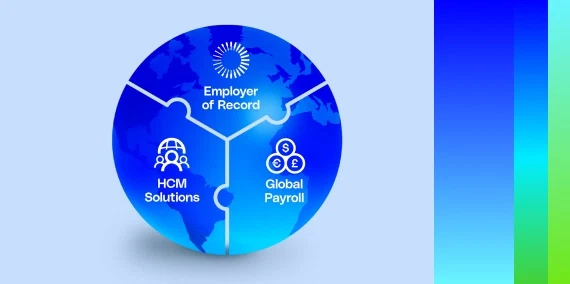The first step to creating an engaged remote workforce is building a digital community.
When you think about community, you may think of a physical place – maybe an office, an extra-curricular activity, your yoga studio, or even the neighborhood you live in.
What happens when the physical spaces we identify with our community are no longer accessible? What happens when community goes digital? Community is no longer a passive result of being in the same place. A digital community requires an intentional effort to make space for connection.
So, how do you maintain authenticity while digitizing your community?
[bctt tweet=”Community is no longer a passive result of being in the same place. A digital community requires an intentional effort to make space for connection.” username=”globalpeo”]
Step 1: Start with YOUR Story
Building community always starts with the individual – our personal narrative. What experiences do we bring with us to work and our relationships, and how does that impact the way we move through life?
This is not so much the story of how you got to where you are – it’s the story of how you got to who you are. How we perceive the world is how we show up every day and by owning our individual story, we empower others to do the same.
The idea behind sharing your own story is not to reveal every secret and triumph, but to acknowledge that we are all seeing the world through the lens of our individual experience.
Sharing personal stories starts at the leadership level. Leaders who embrace their own personal story show their team members they can feel safe doing the same. I refer to this as meeting someone where they are.
When you enter a conversation and spend a moment or two to check in and share how you’re feeling, this has a trickle-down effect on the team. It gives others an understanding that even the most senior member of the team encounters days where they can’t focus. They too struggle sometimes when working from home and this creates an opportunity to relate.
Put It into Practice:
Ask specific questions.
Move away from ‘how are you?’ to more pointed questions like: “do you have what you need to be successful? Is anything standing in your way this week to accomplish your goals? How can I support you this week? Is there anything you’d like to share?” These types of questions allow for us to still focus on productivity, but from a much more empathetic space.
Make space for personal storytelling.
At Globalization Partners, we replicated The Moth, a global storytelling platform, and created our own event for members of the team to sign up to speak, sharing stories during a virtual happy hour.
Colleagues shared moments from their life that had an impact, made them laugh, and taught them strength, among many other topics. We learned secrets to a happy marriage, stories of strangers, cultural awakenings, moments of significant triumph, and how to take risks. This was a chance to learn about the experiences that have shaped our co-workers. The person to kick off the event? Our very own CEO.

Step 2: Build the TEAM Story
The outcome of creating an environment that allows your employees to show up fully is that by default, you create a team atmosphere. Of course, it’s not something that happens overnight, but culture breeds culture – so by saying you’re welcome here, you’re saying we support you here.
This has a significant impact on the feeling your team has when they come to work every day. This is less about a specific event and more about the messaging, the word choice, and the value placed on everyone’s contributions. And when each member of your team can bring their whole selves to work, to learn and grow with each other, it creates a team story – the story of what you’re building together.
Put It into Practice:
Listen to your team.
If you’re cultivating a culture that celebrates the individual and empowers ownership, you’re likely to find that employees will begin to share their ideas more. This is exactly the kind of thing you want in an organization. Employee led initiatives are incredibly powerful and should be celebrated.
This year, we launched an internal diversity and belonging group focusing on creating a safe space for educational events to learn more about equality. Through this initiative, we get to learn about the types of programming and trainings our team might enjoy participating in.
Learn from your team.
We recently launched an internal Learning Management System (LMS) where content is requested and created by our team, for our team. This is incredibly helpful because who else knows our team better than the team itself?
This type of program holds our team accountable, and it also emphasizes the value of each individual’s contribution to the team. We also host initiatives like Ideafest – a call to action for anyone in the company to share ideas to help the business. Teamwork may be a buzzword, but it’s at the core of learning.

Step 3: Create the COMPANY Story
Our corporate communities do not reside exclusively in the office spaces we’ve built, but in the relationships and pride across the organization. Building a community of trust, accountability, and transparency is necessary to foster growth and lends itself to how we tell the story of our organization.
The internal impacts the external – how your employees view your company ultimately impact how others view your company. Our employees are our biggest champions and will also speak the most honestly about us. The internal values that you invest in are the foundation on which the external brand recognition is built. How we talk about our company amongst each other is how we tell our own story – it’s our narrative and it belongs to everyone at the company.
[bctt tweet=”The internal impacts the external – how your employees view your company ultimately impact how others view your company.” username=”globalpeo”]
Put It into Practice:
Be accountable.
Accountability can be tough to measure, but to create a culture of success, it’s imperative. At Globalization Partners, we do this in several ways – through our monthly internal podcast where we interview team members and share major updates everyone should know.
We also have developed a consistent and reliable metric to measure productivity, workload and stress levels with our weekly work summary where we ask all employees to self-report their activities for the week, any hurdles, and stress levels. This is also a chance to recognize team members that they have been working with. Not only are managers able to see a very holistic story of their team at the end of every week, but it also enables them to manage the workload across teams and individuals and plan accordingly.
Be transparent.
When our entire workforce went remote, we took our monthly all staff meeting and doubled it. We moved to a bi-monthly schedule and as we have always done, we host our all hands live, in two time zones. This allows all employees to dial in and feel connected.
We always start with a state of the union from our CEO, and then spend a significant amount of time getting updates from each department. We also ‘team-source’ our staff meetings – meaning, we ask each department lead to nominate someone from their team to present each month and help with slides. This really democratizes our all staff updates and shows the value of all contributors.
Our team regularly cites these meetings and business updates as motivating and encouraging to see all the projects we’re collaborating on and moving forward.
Step 4: Weave These Stories Together
The beauty of creating a digital community is that we don’t have to be co-located to feel connected. None of these methods are revolutionary, and they aren’t even unique – we’ve just learned how to embrace them fully and make them happen.
[bctt tweet=”The beauty of creating a digital community is that we don’t have to be co-located to feel connected.” username=”globalpeo”]
When you act intentionally to draw out the stories of the people on your team, it has an impact. As we transition into the ‘next normal’, it’s imperative that we continue to do this openly and consistently.
So, whether you’re an executive, an HR team member, or anyone who wants to create better connections in your workplace, I challenge you to ask yourself: what’s your story? That’s where it starts.
For more information on building a digital community, download our Guide to Building a Remote Global Team here:







